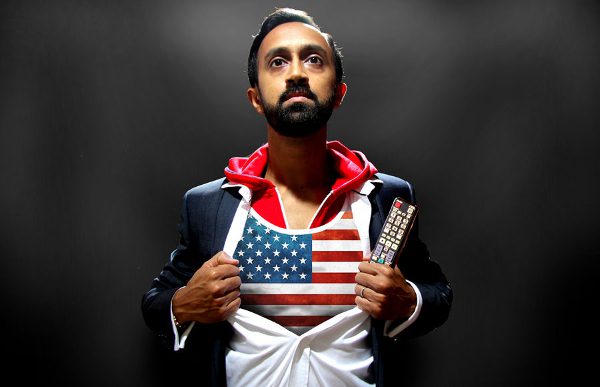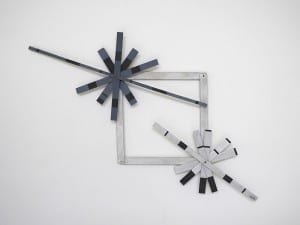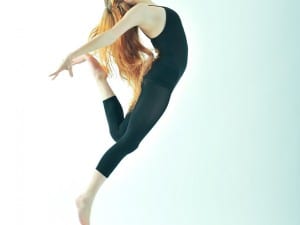Sadler’s Wells New Wave Associate, Hetain Patel, takes to the stage for a very personal take on identity shape-shifting in his new solo American Boy. Patel constructs a warm and funny self-portrait entirely from quotes from American movies and home-grown television. In a seamless synthesis of the vocal and physical impersonations of his playground days, he looks at the multiple personas that we all inhabit in our day-to-day lives. The show runs on 20 and 21 May at Sadler’s Wells and goes on tour this autumn. We interview Patel about the inspiration behind American Boy.
A: Why did you decide to use quotes from TV and film? Were they your personal favourites or were they chosen specifically for this project?
HP: A lot of my work starts autobiographically. So most of the quotes, characters or films are either personal favourites of mine or have had a big impact on me growing up. They are often the ones my friends and I would imitate at school, a lot of them being Hollywood movies from the 90’s, and usually something we found funny. These things seep into you somehow, and so now in American Boy, these TV and film quotes almost become a ready-made self-portrait, collaged from popular culture.
A: Your piece Be Like Water has over two million views on TED Talk, did you have any idea that it would be this successful and do you hope that American Boy will beat it in terms of views?
HP: To be honest I’m still surprised at that – TED talks attract a lot of views but somehow my talk seems to be getting more than the average for the time span it has been online. These numbers are not the norm for me: If I’m lucky my gallery exhibitions average fifteen thousand visitors over a couple of months, and my live performances for the theatre get seen by a total of one or two thousand people over a couple of years – so two million in a few months feels like an abstract number.
I still get very moving feedback through my website and Facebook from random people all over the world who have connected to that talk. I’m so grateful to have been given this platform. As American Boy won’t launch as a TED talk, I’m not worried that it is unlikely to be seen by millions of people. Although I do want my work to reach far and wide, which is of course easier online, I also want to encourage a live experience, in person. I’m really grateful that people who have seen my TED talk are now buying tickets for my live work, and coming to the theatre or the gallery when they usually might not. I’m really proud of this.
A: You look at the way we inhabit multiply personas during our day-to-day lives; what caused you to realise that, and want to create an art piece centred around it?
HP: I think we can all relate to being different versions of ourselves around different people. Depending on the situation, we might purposely project ourselves as more confident or sensitive than we actually feel for example. I find myself speaking with a thicker northern accent in some situations, and in others I try to disguise it. I don’t necessarily think this is a bad thing, just an observation about being human.
For me it comes from the result of childhood bullying and desperately wanting to fit in – learning to walk and talk like someone who sees themselves as different from me. American Boy allows me to take this chameleon-like human trait and really have some fun with exaggerating it – to overtly enjoy the act of imitating multiple people or characters.
A: You were originally from Bolton, why did you decide to call the piece American Boy?
HP: From a young age I experienced America like a lot of Brits: through Hollywood films and music, then also through Marvel comics and Disney cartoons. So with those references, being American was the coolest thing anyone could be. Growing up in Bolton, America was the ultimate fantasy world – somewhere different from here, one big film set where amazing things could happen, from action sequences with superheroes, to geeks like me being able to talk to girls. Also as a big fan of super heroes, it seemed that they all came from American or at least had American accents. American Boy as a title is an acknowledgement of all of the above.
A: These you have said are self-portraits, was it easier to see the differences in persona in yourself when you were creating these pieces?
HP: The making process of this performance has been quite revealing. Imagine making a list from memory of characters and quotes that have influenced you from films, particularly in your formative years. My list was not only huge but on analysing it I realised it had distinct patterns: there were a lot of men in suits (Matrix, Pulp Fiction, Men in Black, Michael Jackson etc.); there were recurring scenes about race (mainly through Eddie Murphy movies); about violence, and a lot of humour. Oh and about not being good with girls!
The quotes represent the good, bad and the ugly of what is portrayed in Hollywood films: love and hate, empathy and prejudice, kindness and violence. By performing the clips I hope to present some of the parallel contradicting traits that I see in myself. The hope is that it is funny and makes you think. American Boy, like all of my work is about being human, and the messy business of trying to figure out how to do that.
American Boy, 8pm 20 and 21 May 2014, Lilian Baylis Studio, Sadler’s Wells, Rosebery Avenue, London EC1R 4TN. To book call the Box Office 0844 412 4300 or visit www.sadlerswells.com.
Credits
1. Hetain Patel, American Boy. Courtesy of Sadler’s Wells.





